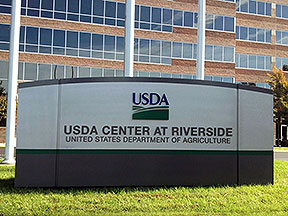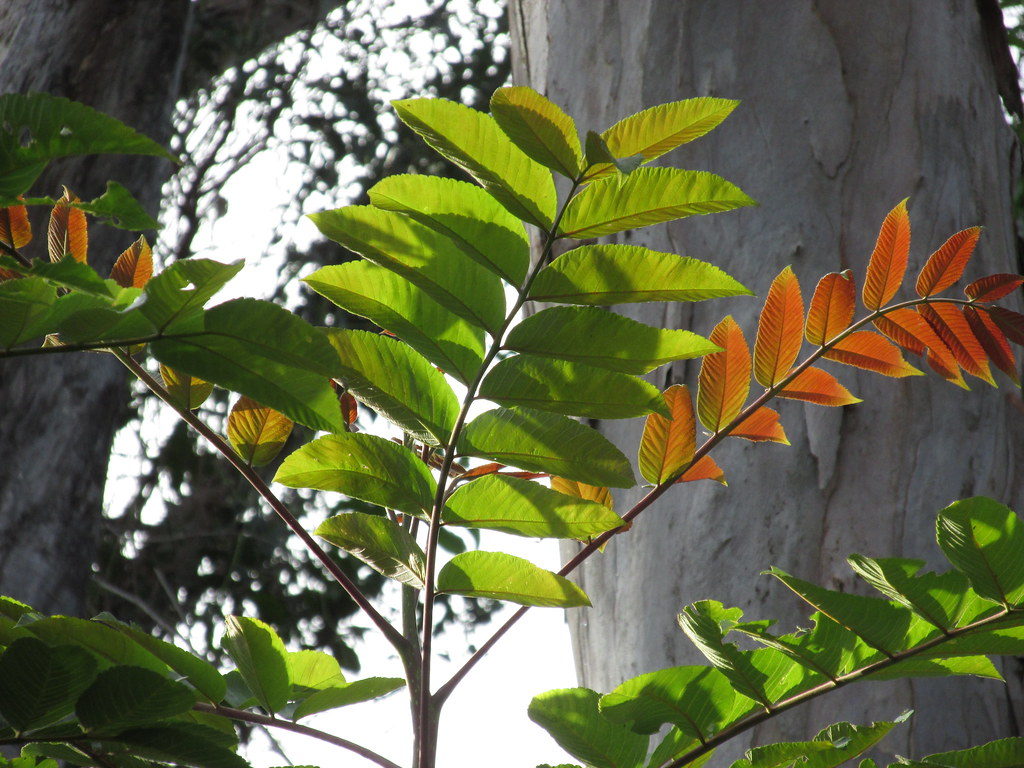
APHIS has published a final Environmental Impact Statement (FEIS) as one of the final steps in modifying its regulations governing conditions for issuing permits for importation, interstate movement, and intrastate movement of plant pests – including biocontrol agents. Access it here.
The original proposal to modify the regulatory system was published in March 2017.
I find the rationale for modifying the regulations to be compelling: the current regulations:
- date from 2001;
- do not adequately reflect changes in APHIS’ mandate enacted by the Plant Protection Act; and
- do not focus agency efforts on the permit applications that pose the highest risk.
The FEIS presents two alteratives: the “preferred alternative” and the “comprehensive risk mitigation program.” APHIS settles for the less protective actions that expose natural resources, especially, to risk from non-indigenous species
1) The FEIS reiterates — without discussion or rationale — APHIS’ acceptance of the vague word “acceptable” to describe the level of protection the agency strives to achieve (see pp. 2, 22, 45, 106 of the FEIS). The FEIS does not attempt to quantify the differences in the levels of protection provided by the two alternatives.
2) APHIS advocates a policy alternative that does not require post-release monitoring of biocontrol agents. The FEIS justifies adoption of this alternative despite putting a welcome emphasis on the importance of just such efforts to determine the actual impacts of biocontrol organisms on both target and non-target species (p. 67). On page 70, the FEIS notes that the paucity of documented examples of adverse effects on non-target species “may be the result of insufficient monitoring after release …” It goes on to note that “very few introductions included a careful evaluation of nontarget impacts …” The FEIS notes the paucity of funding for this research and – sometimes – the lack of authority to require such monitoring.
In the case of APHIS, I see no legal impediment to the agency requiring biocontrol permit applicants to carry out post-release monitoring.
Indeed, if APHIS chose the “comprehensive risk mitigation program”, the agency would require enhanced post-release monitoring. The goal would be to document “the extent of establishment, spread, and limit to expected hosts” of the introduced biocontrol organism (p. 43). Nevertheless, the FEIS accepts the “preferred alternative”, which does not require such monitoring. The reason given for this choice is that the comprehensive program would require too many resources. I note below that we can overcome this barrier by lobbying for increased appropriations and higher staffing levels.
3) APHIS dismisses risks associated with high levels of uncertainty. In justifying the less rigorous “preferred alternative”, the FEIS refers 20 times to the persistence of uncertainties in analyses of the potential impact of importation, interstate transport, or release of non-indigenous organisms. FEIS also says that given these inevitable uncertainties, APHIS should regulate most organisms “conservatively” – defined in the FEIS as “based on what is known” ( p. 74). Of course, APHIS long ago rejected the precautionary approach – which is a truly conservative approach.
4) The FEIS accepts APHIS’ current practice of evaluating risks only in the geographic area of approved introduction – despite conceding repeatedly that introduced organisms often spread beyond the original introduction site. It is true that the geographic area evaluated includes all continental states (whether Alaska is included is unclear). However, there is no discussion of the likelihood that organisms introduced to the continental states will be transported to U.S. islands in the Caribbean or Pacific – through either authorized or unauthorized mechanisms.
The FEIS Asserts Principles that APHIS Sometimes Fails to Live Up To
As I note above, the FEIS makes numerous references to the reality that an organism released into the environment might establish and spread to its maximum geographic range based upon host distribution, climate and other range-limiting factors. According to the FEIS, APHIS’ decisions about issuing a permit allowing release of non-native organisms must reflect that likelihood. For example:
“In principle, therefore, release of the biological control organism, at even one site, should be considered equivalent to release over the entire area in which potential hosts occur, and in which the climate is suitable for reproduction and survival.” (P. 67)
However, APHIS’ recent decision to allow introduction of a thrips (Pseudophilothrips ichini) in Florida to control Brazilian pepper (Schinus terebinthifolius) does not reflect this principle.
The environmental assessment (EA) that analyzed this proposed release reported that the thrips would both encounter a suitable climate in Hawai`i (pp. 11 and 19) and feed on two native Hawaiian species – Rhus sandwicensis and Dodonaea viscosa. The EA described the feeding damage on these non-target species as negligible and noted that P. ichini sustained only one generation on these non-target species (p. 27). Furthermore, the EA noted (p. 29) that the action being reviewed did not include release of P. ichini in Hawai`i. However, the EA did not discuss the frequency with which insects established on the Continent are transported – without authorization – to the Islands. In my view, if introduced to Hawai`i – by authorized or non-authorized transport – the thrips is likely to thrive because several good hosts are widespread. By feeding on these good hosts, the thrips could enjoy a “food subsidy” that would allow it to put constant pressure on the vulnerable Hawaiian species. [You can obtain a copy of my comments on the draft EA by contacting me via the “contact us” button, or by visiting the Federal Register site at the link given above.]

The FEIS fails to address an important risk

photo by National Park Service
The FEIS doesn’t recognize – or even mention – the impact of non-native earthworms on native ecosystems and native plants! The only discussion of risks associated with earthworms is on p. 26, where the sole concern is the risk that soil-dwelling worms could vector crop and livestock diseases present in the soil in the country of origin.
Yet the FEIS notes that APHIS’ mandate – and the purpose of the permit system – is to protect not only American agriculture but also our natural resources. I have blogged about the severe impact earthworms have on native flora here. Why did the authors of the EIS ignore the large and growing scientific literature on this issue?
Good Points in the FEIS
1) The FEIS notes the concern that biocontrol agents will attack non-target species, with results that “may not be easily reversed.” (pp. 66, 74) The FEIS cites several examples, including Cactoblastis cactorum on North American prickly pear (Opuntia) cacti – see my blogs here and the potential impact of Rhinocyllus conicus on native thistles. The FEIS notes that these particular biocontrol agents would not be approved for release under current policies. However, the FEIS also reports that a biocontrol agent released on thistles in Virginia in 1997 – that is, under criteria currently in use – had spread across the continent to California and Nevada within two years! While the FEIS reports the spread as by natural means, I wonder if some enterprising farmers might have taken infected plants/inoculum without authority.
2) The FEIS notes several indirect concerns arising from the environmental release of biocontrol organisms, including contamination, adaptation, interference, competition, and hybridization. When biocontrol organisms establish but don’t reduce populations of the target weed, they can provide a “food subsidy” to some organisms, thus disrupting the ecological balance. The example given is two gall flies (Urophora affinis and U. quadrifasciata), which failed to control knapweed and led to population explosions of deer mice – with repercussions for competition among small mammals, possibly reduced recruitment of native plant populations, and increased incidence of a serious disease of humans, Sin Nombre hantavirus. (Recall my similar concern re: a thrips if it reaches Hawai`i, above.)
3) The FEIS cites scientific publications demonstrating the low rate of success of biological control in controlling invasive plants or arthropods. One such discussion – on p. 53 – notes that an estimated 65% of introduced arthropods successfully establish for the purposes of weed control, 25 – 34% of those introduced to control arthropods. These figures are repeated on p. 59. However, on pp. 67-68, even lower success rates are presented, based on worldwide estimates. This is not a good record, given the risks involved. Furthermore, given my focus on non-native insects, I am concerned by the statement in the FEIS that the scientific study of potential risks of biocontrol targetting arthropods control is not thorough. (pp. 68-69)
The Center for Invasive Species Prevention hopes that other stakeholders will work with us to persuade APHIS to work toward adoption of the more protective approach described in the “comprehensive risk mitigation program”. A key factor will be lobbying the Administration and Congress to increase appropriations and personnel ceilings so that APHIS has the resources necessary to carry out the more protective program.
We welcome comments that supplement or correct factual information, suggest new approaches, or promote thoughtful consideration. We post comments that disagree with us — but not those we judge to be not civil or inflammatory.